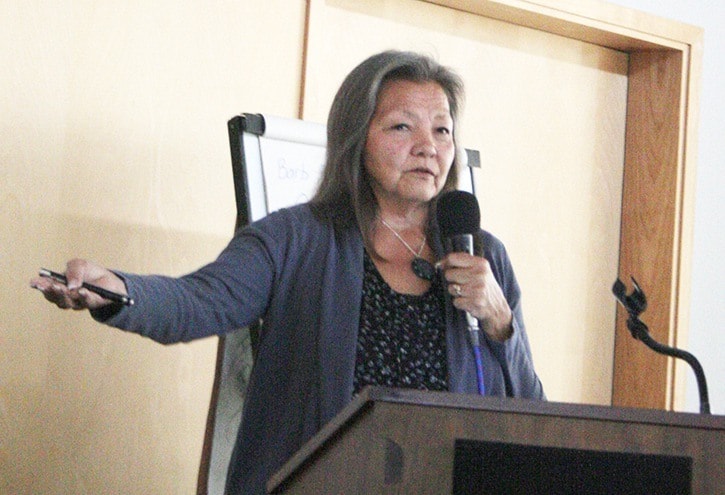A Northeastern B.C. First Nation leader and North Coast scientist warned Prince Rupert residents that all the interest to develop in the region could destroy the environment beyond repair.
The Prince Rupert Environmental Society hosted "Fracking Our Future", with Chief Liz Logan of the Treaty 8 Nation speaking to a packed room in the Multi-Purpose Room at Northwest Community College.
Logan lives in Fort Nelson, part of the Treaty 8 Nations. During the event, Logan spoke about challenges, impacts, problems and changes to the landscape caused by numerous developments in her area. Treaty 8 territory is ripe with industry including agriculture, mining and forestry, as well as oil and gas extraction.
"A once pristine area has become an industrial landscape," said Logan.
Logan warned of issues her nation has had to deal with because of industry development, such as an influx of transient workers putting pressure on community services, including a shortage of doctors and increases in drug and alcohol usage in communities.
Logan also said fracking involved in the natural gas industry within the territory have made a significant number of animals sick, and that air emissions are a concern.
Logan said the pace of industry activity is worrisome.
"Conservation, protection, sustainability. Those are words that we don't ever hear the government say. It's not in their language," said Logan.
"They just want to get in and get rich right now and 'the heck with tomorrow'. Our people are always taught if you do something today, you think seven generations down the road."
The event started with speaker Dr. Barb Faggetter, a registered professional biologist with a Bachelor of Science in chemistry/biochemistry and a PhD in biological and chemical oceanography. Faggetter spoke about the findings of her most recent report looking at LNG in the Skeena River estuary and how it could be a risk to salmon, reported on in the May 14 issue of the Northern View.
"In the region there's 377 million juvenile salmon, on average, in a year. Of that, 376 million or something over 99 per cent come from the Skeena River," said Faggetter, adding most of these have to go through the Skeena estuary system.
"There's lots of habitat out there for many species ... of fish, birds and marine mammals. It is a very extensive list, and healthy ecosystem at the moment."
According to Faggetter, a significant portion of the shoreline around the estuary would be impacted by a number of proposed developments in the area. She said three proposed projects require dredging in the area that would mix up dioxins and freons caused from effluent fluids at the former pulp mill.
"We would have contaminated sediment getting stirred up and it would have to be disposed of somewhere," Faggetter said, adding the Pacific NorthWest LNG project would require the most dredging.
